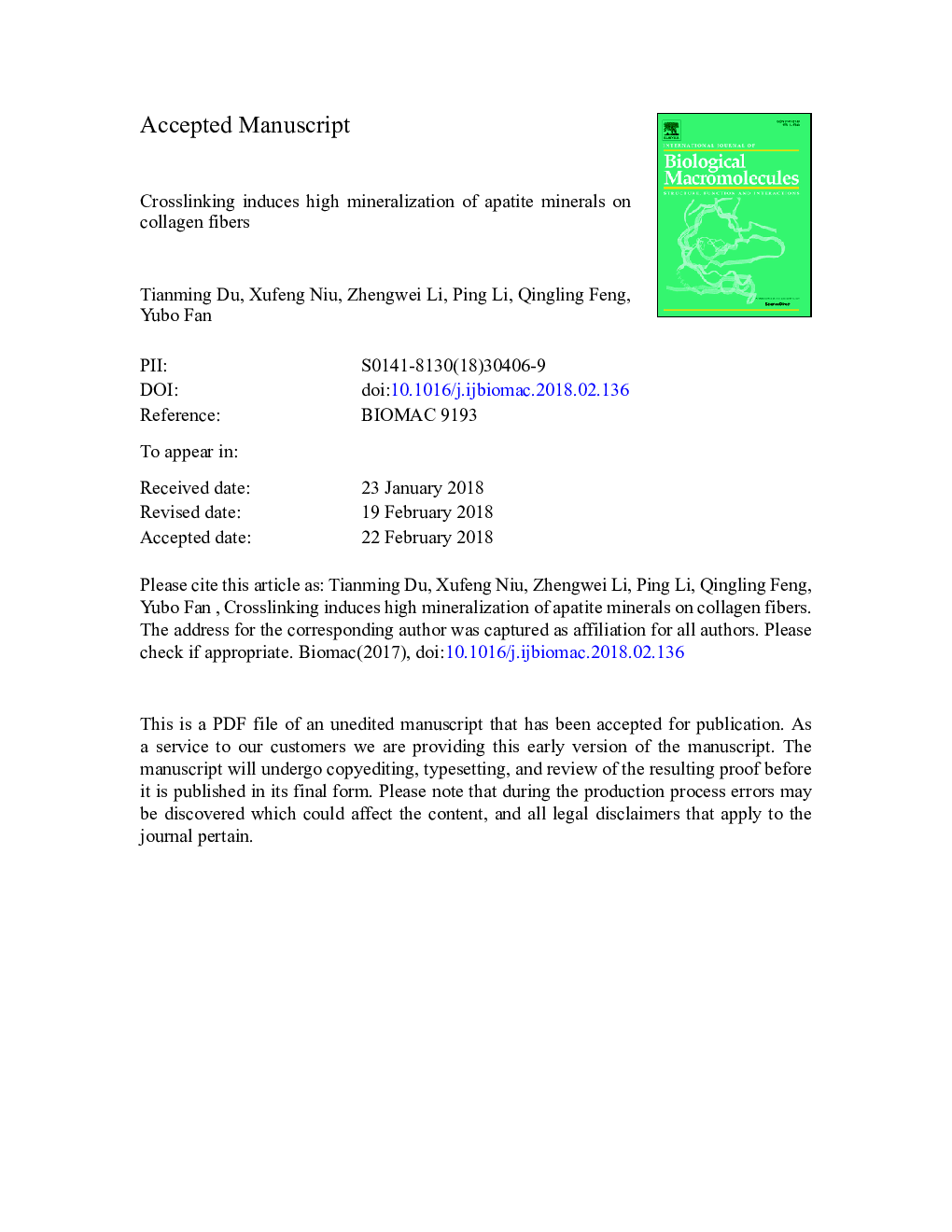| Article ID | Journal | Published Year | Pages | File Type |
|---|---|---|---|---|
| 8327520 | International Journal of Biological Macromolecules | 2018 | 30 Pages |
Abstract
Type I collagen, as the critical organic component of bone matrix, plays a template role in mineralization. Gamma-ray irradiation is used to prepare collagen with different crosslinking degrees without introducing foreign substances for mineralization. Significant improvement in crosslinking degree of collagen can be inferred by enzymolysis and differential scanning calorimetry analysis. Scanning electron microscopy observation reveals that, as crosslinking degree increases, the pore structure of collagen becomes more compact. Fourier transform infrared spectroscopy analysis shows the intact retention of classical triple-helical structure of collagen after crosslinking and the following mineralization. Atomic force microscopy characterization, calcium and phosphorus assay kit tests and thermogravimetry measurements indicate that the more compact the collagen structure, the more hydroxyapatite can attach on collagen fibers. These findings reveal the high crosslinking degree of collagen is favorable for the improvement of mineralization ability by providing a more stable and compact network structure. Such crosslinked collagen may provide a more potential way for the preparation of bone substitute materials.
Related Topics
Life Sciences
Biochemistry, Genetics and Molecular Biology
Biochemistry
Authors
Tianming Du, Xufeng Niu, Zhengwei Li, Ping Li, Qingling Feng, Yubo Fan,
